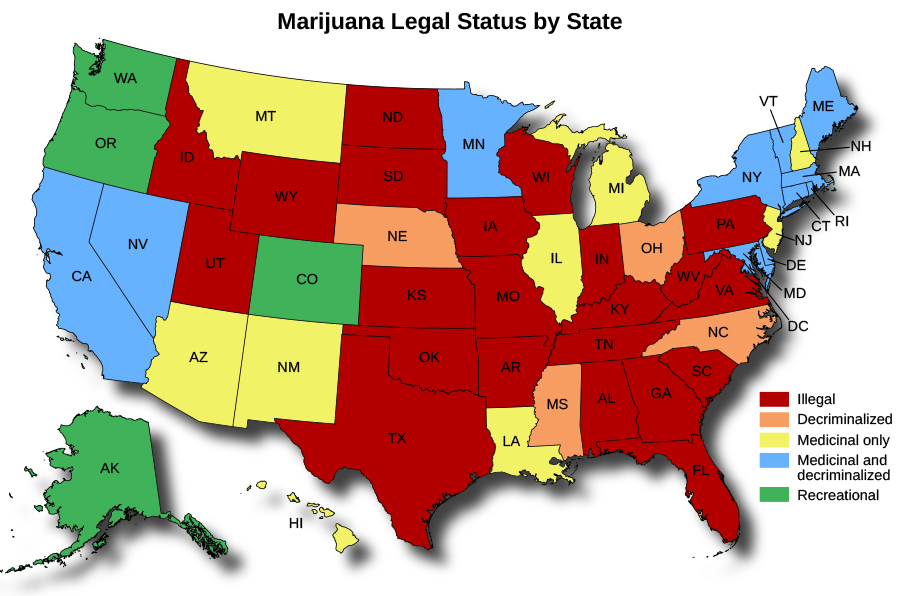| << Chapter < Page | Chapter >> Page > |
The fact that a minority voice like Miranda’s can be heard in court, and that his or her grievance can be resolved in his or her favor if warranted, says much about the role of the judiciary in a democratic republic. In Miranda’s case, a resolution came from the federal courts, but it can also come from the state side. In fact, the many differences among the state courts themselves may enhance an individual’s potential to be heard.
State courts vary in the degree to which they take on certain types of cases or issues, give access to particular groups, or promote certain interests. If a particular issue or topic is not taken up in one place, it may be handled in another, giving rise to many different opportunities for an interest to be heard somewhere across the nation. In their research, Paul
Brace and Melinda
Hall found that state courts are important instruments of democracy because they provide different alternatives and varying arenas for political access. They wrote, “Regarding courts, one size does not fit all, and the republic has survived in part because federalism allows these critical variations.”
But the existence of the dual court system and variations across the states and nation also mean that there are different courts in which a person could face charges for a crime or for a violation of another person’s rights. Except for the fact that the U.S. Constitution binds judges and justices in all the courts, it is state law that governs the authority of state courts, so judicial rulings about what is legal or illegal may differ from state to state. These differences are particularly pronounced when the laws across the states and the nation are not the same, as we see with marijuana laws today.
There are so many differences in marijuana law s between states, and between the states and the national government, that uniform application of treatment in courts across the nation is nearly impossible ( [link] ). What is legal in one state may be illegal in another, and state laws do not cross state geographic boundary lines—but people do. What’s more, a person residing in any of the fifty states is still subject to federal law.

For example, a person over the age of twenty-one may legally buy marijuana for recreational use in four states and for medicinal purpose in nearly half the states, but could face charges—and time in court—for possession in a neighboring state where marijuana use is not legal. Under federal law, too, marijuana is still regulated as a Schedule 1 (most dangerous) drug, and federal authorities often find themselves pitted against states that have legalized it. Such differences can lead, somewhat ironically, to arrests and federal criminal charges for people who have marijuana in states where it is legal, or to federal raids on growers and dispensaries that would otherwise be operating legally under their state’s law.
Differences among the states have also prompted a number of lawsuits against states with legalized marijuana, as people opposed to those state laws seek relief from (none other than) the courts. They want the courts to resolve the issue, which has left in its wake contradictions and conflicts between states that have legalized marijuana and those that have not, as well as conflicts between states and the national government. These lawsuits include at least one filed by the states of Nebraska and Oklahoma against Colorado. Citing concerns over cross-border trafficking, difficulties with law enforcement, and violations of the Constitution’s supremacy clause, Nebraska and Oklahoma have petitioned the U.S. Supreme Court to intervene and rule on the legality of Colorado’s marijuana law, hoping to get it overturned.
How do you think differences among the states and differences between federal and state law regarding marijuana use can affect the way a person is treated in court? What, if anything, should be done to rectify the disparities in application of the law across the nation?
Where you are physically located can affect not only what is allowable and what is not, but also how cases are judged. For decades, political scientists have confirmed that political culture affects the operation of government institutions, and when we add to that the differing political interests and cultures at work within each state, we end up with court systems that vary greatly in their judicial and decision-making processes.
Just as the laws vary across the states, so do judicial rulings and interpretations, and the judges who make them. That means there may not be uniform application of the law—even of the same law—nationwide. We are somewhat bound by geography and do not always have the luxury of picking and choosing the venue for our particular case. So, while having such a decentralized and varied set of judicial operations affects the kinds of cases that make it to the courts and gives citizens alternate locations to get their case heard, it may also lead to disparities in the way they are treated once they get there.
The U.S. judicial system features a dual court model, with courts at both the federal and state levels, and the U.S. Supreme Court at the top. While cases may sometimes be eligible for both state and federal review, each level has its own distinct jurisdiction. There are trial and appellate courts at both levels, but there are also remarkable differences among the states in their laws, politics, and culture, meaning that no two state court systems are exactly alike. The diversity of courts across the nation can have both positive and negative effects for citizens, depending on their situation. While it provides for various opportunities for an issue or interest to be heard, it may also lead to case-by-case treatment of individuals, groups, or issues that is not always the same or even-handed across the nation.

Notification Switch
Would you like to follow the 'American government' conversation and receive update notifications?